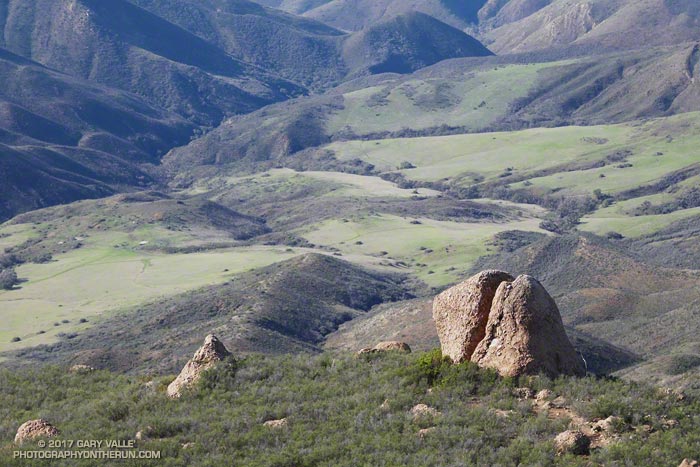
From today’s New Year’s Day run over Boney Mountain to Sandstone Peak and Serrano Valley from Wendy Drive.
Some related posts: Over Boney Mountain to Sandstone Peak and Serrano Valley, Chamberlain Rock

From today’s New Year’s Day run over Boney Mountain to Sandstone Peak and Serrano Valley from Wendy Drive.
Some related posts: Over Boney Mountain to Sandstone Peak and Serrano Valley, Chamberlain Rock
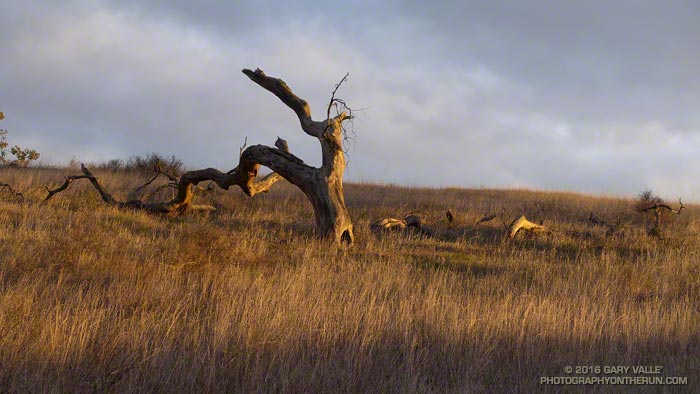
A valley oak burned in the 2005 Topanga Fire. From Wednesday afternoon’s sunset run.

Updated January 4, 2017.
Not since the beginning of the drought has Downtown Los Angeles experienced such a wet December. As of December 31, 2016:
• December rainfall was 2.22 inches above the monthly normal of 2.33 inches.
• The 4.55 inches of rain recorded was the wettest December since December 2010 and the most for any month since January 2010.
Since the Rain Year began July 1, 5.95 inches of rain has fallen at Downtown Los Angeles (USC). This is 1.63 inches above the normal July-December rainfall of 4.32 inches. It is the best start to the Rain Year (Jul 1-Jun 30) and Water Year (Oct 1-Sep 30) since 2010.
The photograph of Century City and Downtown was taken from Temescal Ridge while doing the Will Rogers – Temescal Canyon loop from the End of Reseda Saturday (December 24). According to NWS records Downtown Los Angeles recorded 2.32 inches of rain from December 21 to December 24..
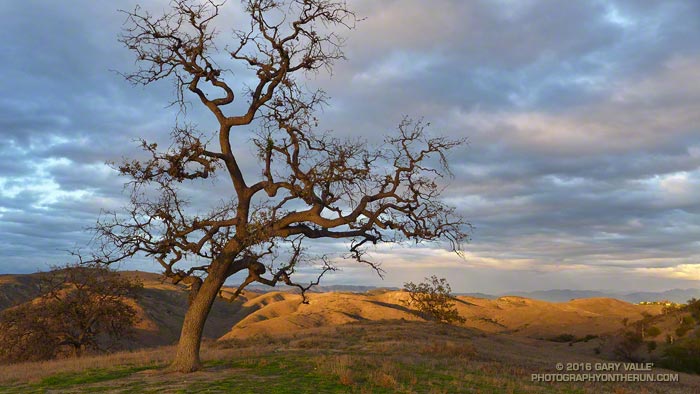
As I climbed the long hill, the wind began to increase, gusting fitfully in one direction and then another. Chilled, I stopped to pull on my sleeves. As I tugged at one sleeve the setting sun suddenly broke under the patchwork of clouds, illuminating the hills in a wonderful — but fleeting — golden light.
Such situations can be anticipated, but not planned. In a matter of minutes the sun would set, or a stray cloud would block the sun. Camera in hand I continued to the top of the hill, hoping to see and not just shoot for the sake of shooting.
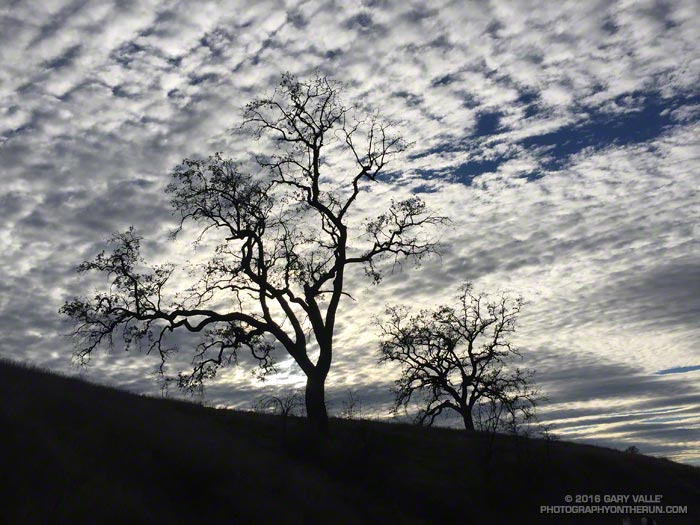
On my run today (Tuesday), the leading edge of the cloud shield associated with a cut-off upper level low southwest of the Los Angeles began to move into the area.
Systems such as this are notoriously difficult to forecast and computer models (and forecasters) often disagree. In this case the wetter solution won the day with a half-inch of rainfall being recorded at Downtown Los Angeles (USC) Wednesday evening.
The storm increased December’s rainfall total in Los Angeles to 2.26 inches — about 0.88 inch above normal for the month.
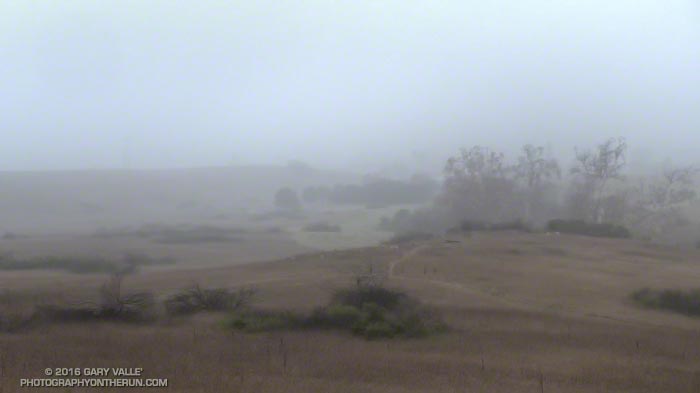
From this morning’s out and back run from Satwiwa (Wendy Drive) to Mugu Peak.